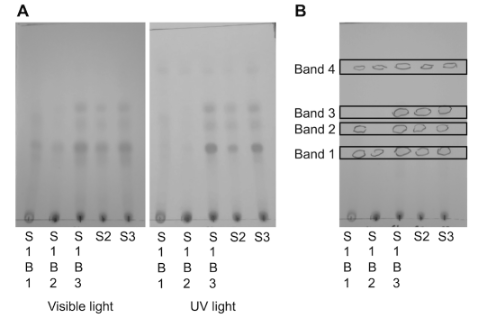VOLUME 16 NUMBER 1 (January to June 2023)

SciEnggJ. 2023 16 (1) 244-253
available online: June 24, 2023
*Corresponding author
Email Address: mcvelarde@up.edu.ph
Date received: April 17, 2023
Date revised: May 24, 2023
Date accepted: June 7, 2023
DOI: https://doi.org/10.54645/2023161QFV-33
ARTICLE
Chayote leaves display seasonal variation in phytoestrogenic activities and phenolic content
Diliman, Quezon City, Philippines 1101
2Natural Products and Peptidomics Laboratory,
Department of Physical Sciences and Mathematics,
College of Arts and Sciences, University of the Philippines
Manila, Philippines 1000
Chayote (Sicyos edulis Jacq.) is a popular vegetable in the Philippines and has been recognized for its nutritional value and bioactive compounds, including phenolic acids found in its edible parts. Hence, this study sought to determine whether extracts from S. edulis shoots can elicit a bioactive estrogenic response. Specifically, the study determined whether the location of cultivation or monsoon season of collection would influence the estrogenic activities of S. edulis extracts. Here, we found that a specific fraction (F5.6) of S. edulis shoots isolated through solid-phase extraction (C-18 and HLB) inhibited the transactivation of an estrogen-induced luciferase reporter gene in an estrogen receptor-positive cell line T47D without affecting cell viability, independently of the farm source and the season of sample collection. This inhibition was also seen in the E2-induced expression of superoxide dismutase 2 (SOD2), an antioxidant enzyme upregulated in advanced breast cancer cells. In contrast, the phenolic content in the F5.6 fraction varied across seasons, with a higher content found during the northeast monsoon season (0.175 ± 0.027 mg GAE/mg sample) than the southwest monsoon seasons (0.043 ± 0.015 and 0.051 ± 0.012 mg GAE/mg sample). The high phenolic content increased the ratio of estrogen receptor alpha to beta transcripts and the mRNA expression level of the estrogen-responsive gene, growth regulation by estrogen in breast cancer 1 (GREB1A), in T47D cells. Overall, this study showed how seasonal variation may affect the phenolic content of S. edulis and influence the plant’s bioactivity, providing a potential cultivation strategy in obtaining extracts with the intended bioactivity.
© 2024 SciEnggJ
Philippine-American Academy of Science and Engineering